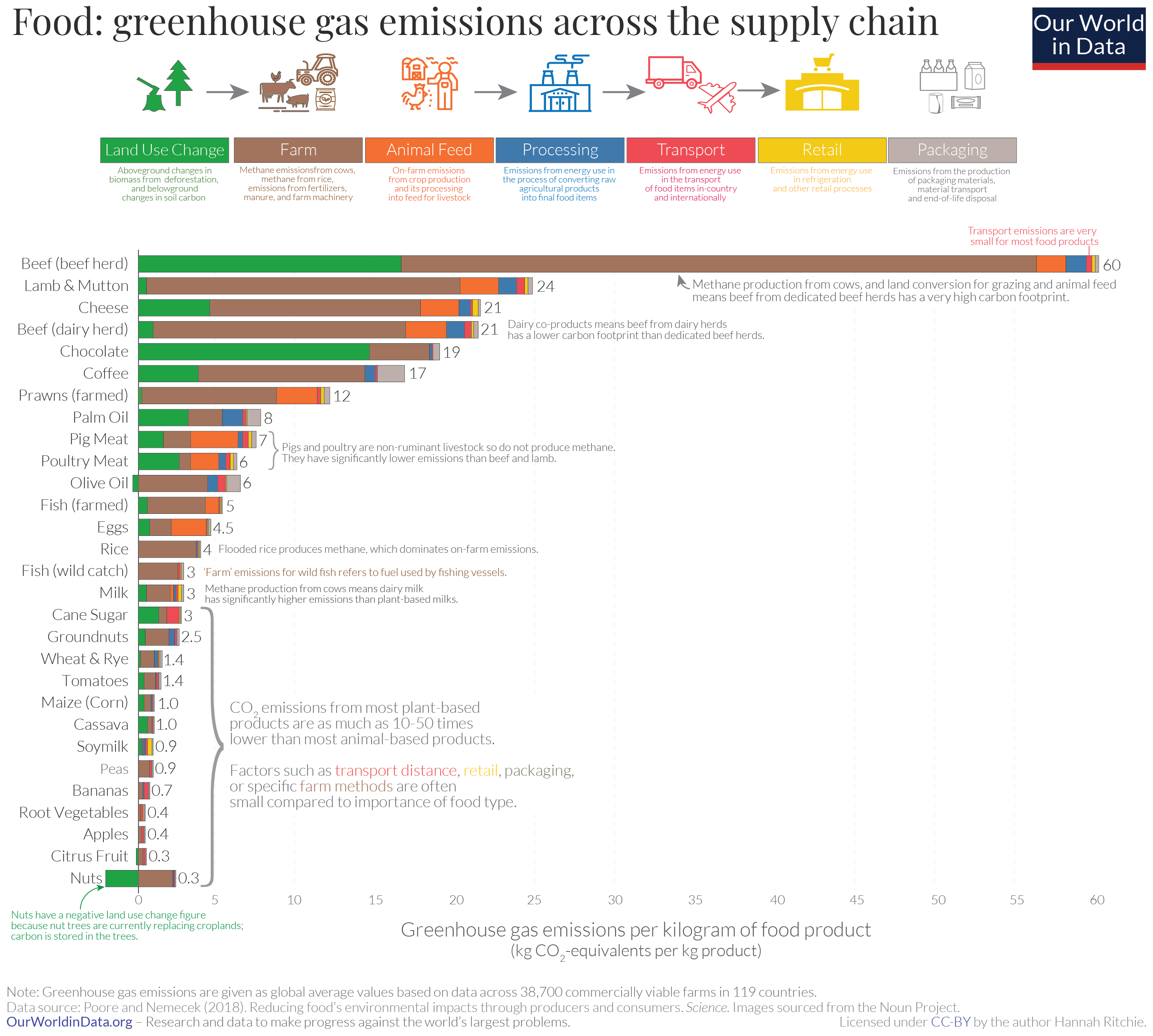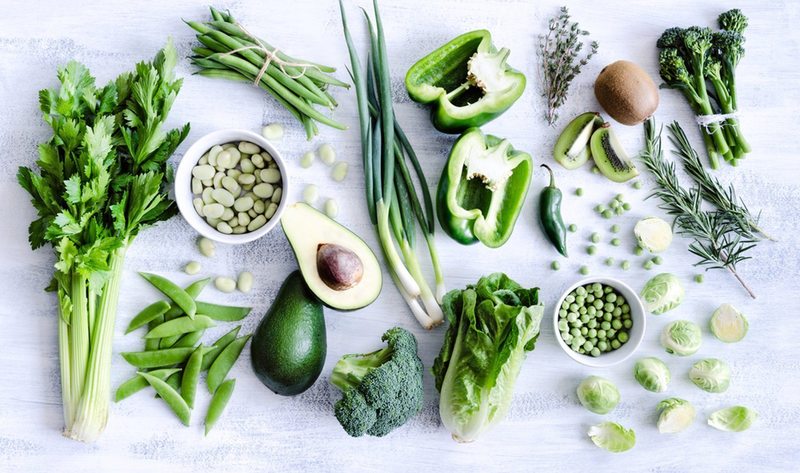The rise of diets like vegetarianism and veganism over the past twenty decades has irked some and made others question their habits. Have you considered how your diet influences your carbon footprint? Earth.Org sheds light on the impact your choices can make
—
To start things off, take a look at this great breakdown of emissions for each food type.

Reduce Carbon Footprint by Changing Diets
Delving into the global food supply chain may help us to understand some of the underlying factors of climate change. A few things stand out immediately, like the disproportional emissions from beef, mainly due to the “farming” element. This refers to methane emitted directly from the animal, the fertilizers and the farmer’s machinery. Beef also features a high cost in the form of land use change, because cattle farming is directly responsible for a large amount of deforestation (e.g. 62% of Amazon Rainforest clearing).
Interestingly, transport-related emissions are nearly insignificant, which puts the “eat locally” trend into question.

As many of you know, the resource cost to nutritional value ratio of animal products is quite low. Much more food can be generated with far less resources when sticking to vegetables, whereas huge swathes of land and massive amounts of water are needed for meat production. Meat is simply inefficient.
Comparing Dietary Emission Patterns
In a bid to scrutinise the current emission pattern in various countries or regions, our team has collected and visualised the dietary emissions data into infographics.

A breakdown and comparison of the emissions from some of the most common diets around the world.
The American and South-East Asian diets have the greatest proportion of red meat, poultry and fish, causing relatively higher greenhouse gas emissions in total. In the Mediterranean, people consume more dairy products than meat, lessening the impact but animal rearing remains costly. Vegetarian diets can vary quite a bit, but assuming the person is not a dairy lover, the dietary emissions come quite close to those of the vegan’s.

Plant-based alternatives can help to make a greener future for the earth. From milk and eggs to meat, fish, and honey, vegan alternatives and substitutes are now available for nearly all animal-based foods. The market targeting green eaters is growing, offering a range of culinary possibilities that are with great nutritional values, many health benefits, cruelty-free and save more resources. Better still, food companies have processed mixtures of soy and other legumes, grains, and a variety of plants into burgers, nuggets, sausages, and other meat-shaped products. These are perfect for meat lovers to save the environment by changing daily diets.
This article was written by Monique Wong and Owen Mulhern.
You might also like: The Climate Crisis is Threatening Global Food Security
References
-
Hjorth, T., Huseinovic, E., Hallström, E., Strid, A., Johansson, I., Lindahl, B., … & Winkvist, A. (2020). Changes in dietary carbon footprint over ten years relative to individual characteristics and food intake in the Västerbotten Intervention Programme. Scientific reports, 10(1), 1-14.
-
Hulshof, R. B. A., Berndt, A., Gerrits, W. J. J., Dijkstra, J., Van Zijderveld, S. M., Newbold, J. R., & Perdok, H. B. (2012). Dietary nitrate supplementation reduces methane emission in beef cattle fed sugarcane-based diets. Journal of animal science, 90(7), 2317-2323.










![The Statistics of Biodiversity Loss [2020 WWF Report]](https://u4d2z7k9.rocketcdn.me/wp-content/uploads/2020/12/lprwinkyTHB-544x306.jpg)





